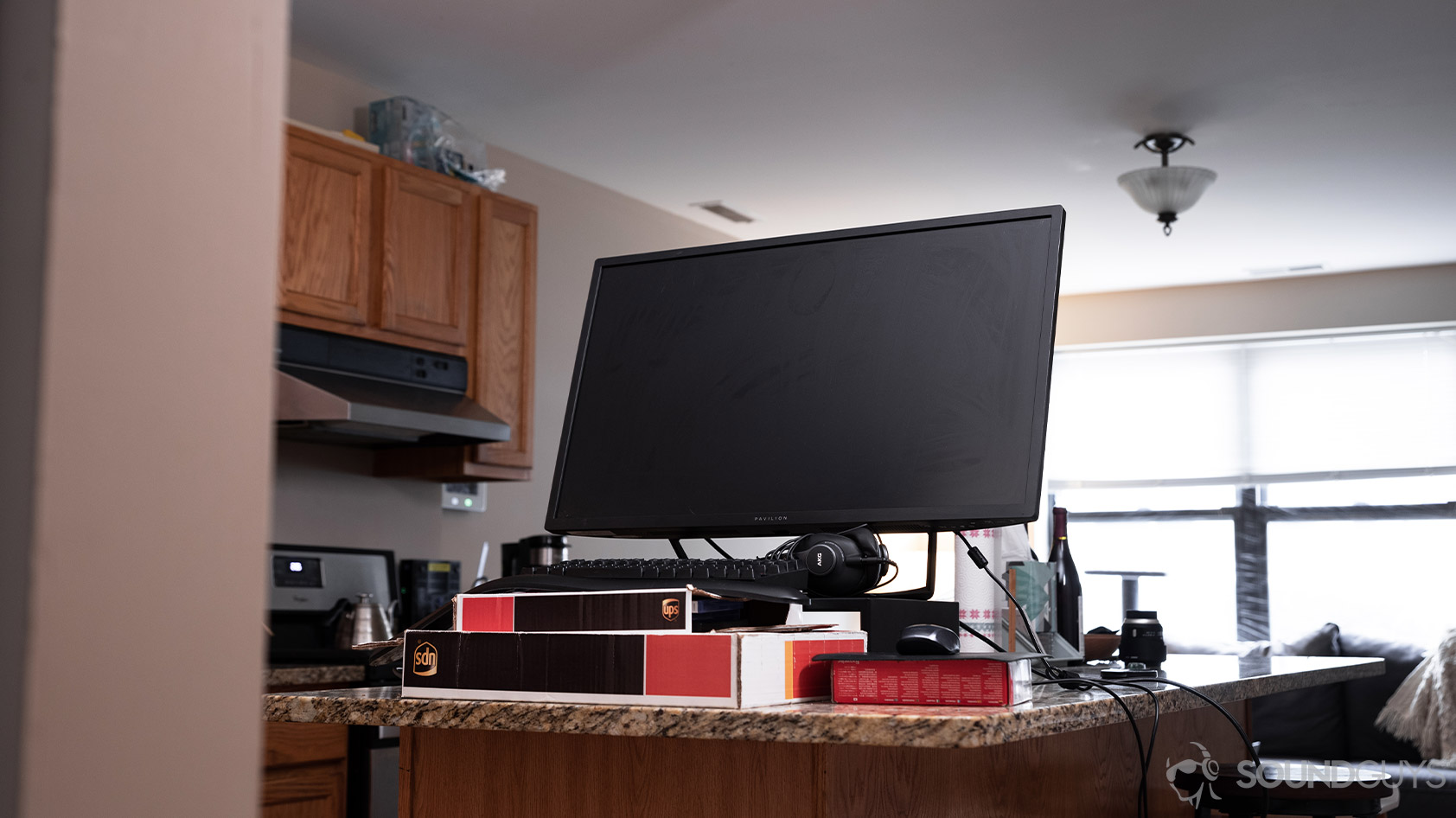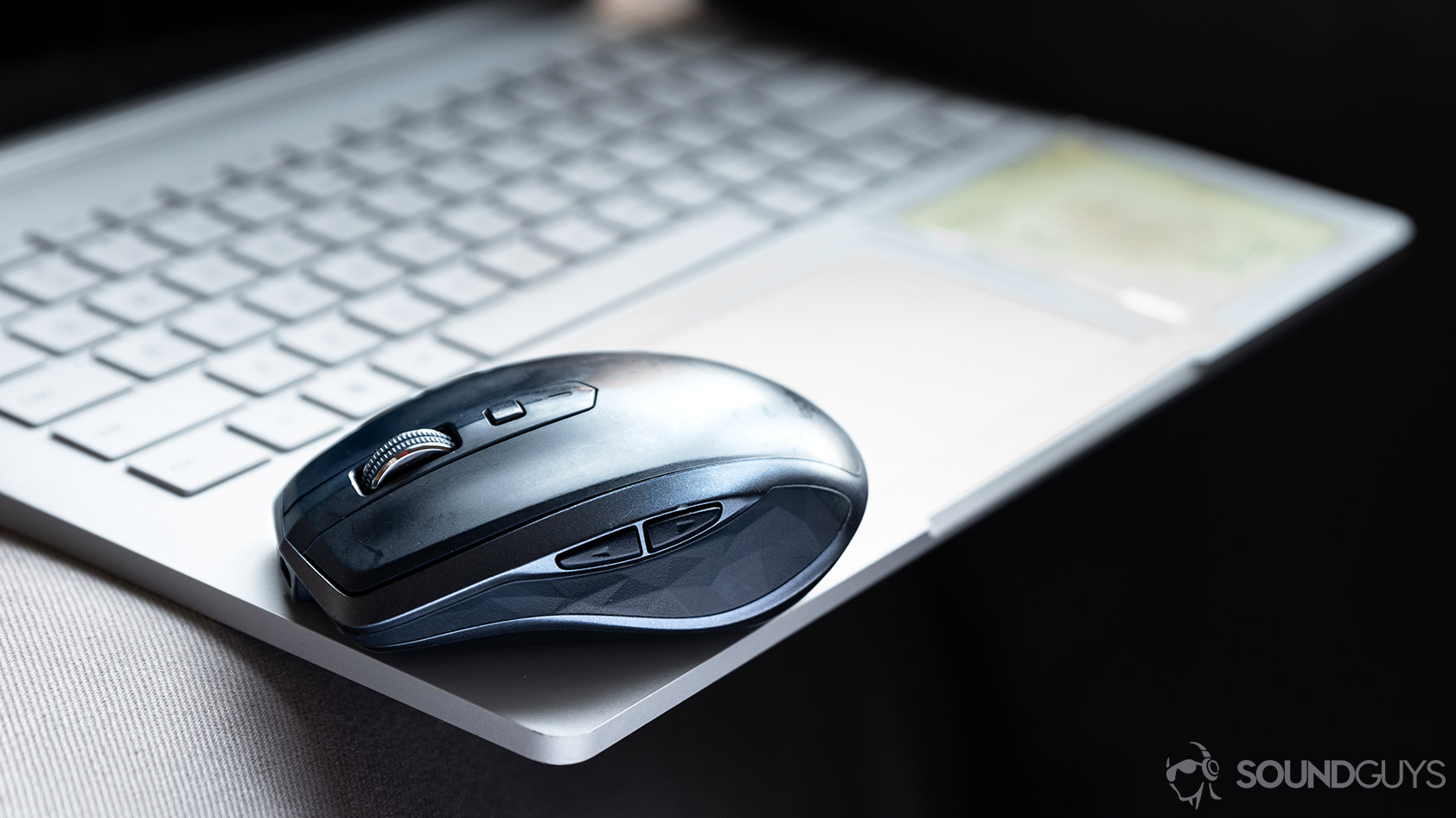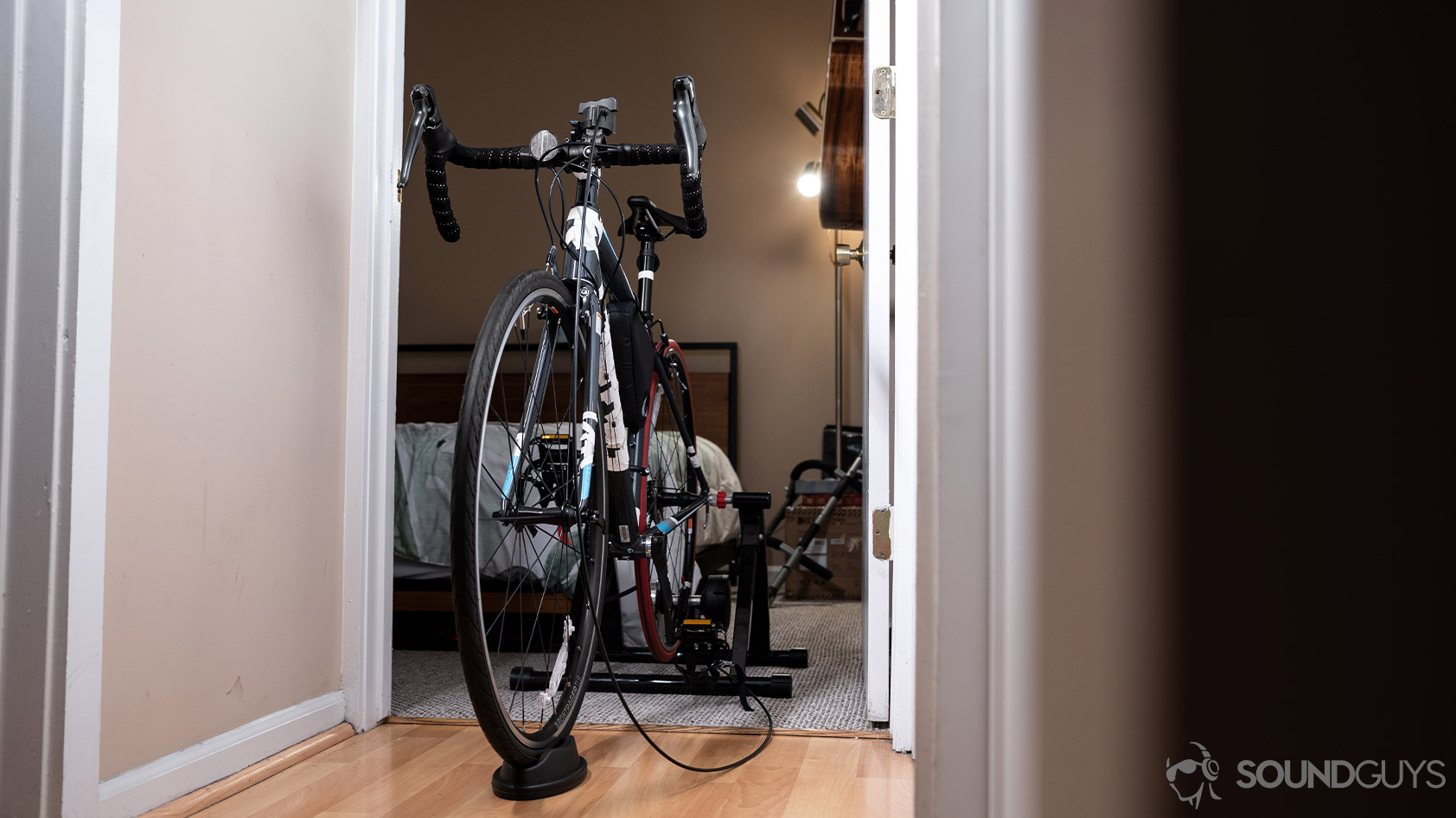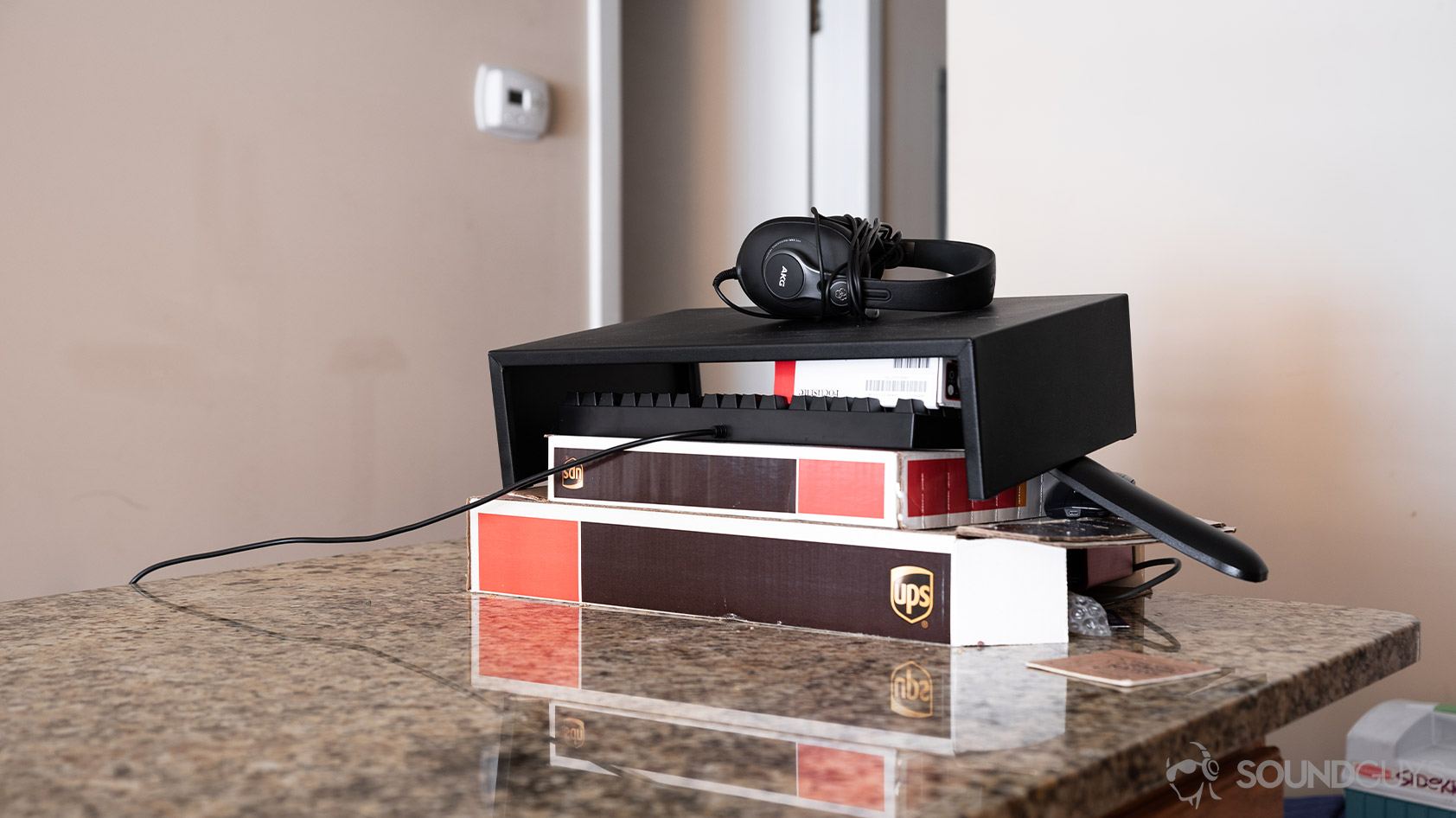All products featured are independently chosen by us. However, SoundGuys may receive a commission on orders placed through its retail links. See our ethics statement.
How to work from home
In this day and age, a huge number of people are finding that they suddenly can work from home. While the practice offers several advantages in theory (I mean, who wants to commute?), it’s tough to do in practice. Most SoundGuys writers are 100% remote (and have been since 2016), so we felt it would be handy to have a guide for anyone who needs to learn how to work from home.
“But why should I listen to SoundGuys?” you may ask. Well, for most who work from home, audio gear is essential to making working at home… work.
Get equipped for the task
Whether you’re a code monkey, manager, or temporarily stuck at home, there are a few essential tools for making an office out of your own living space.
- A microphone: conference calls, gaming, and one-on-one meetings require the use of a microphone. Trust us when we tell you that you want something that sounds good; otherwise, you’ll be repeating yourself a lot.
- Headphones: against speakers, headphones have a number of benefits. Namely that they allow you to take sensitive calls and block out external noise. If your roommates also work from home, you may want to pony up for noise canceling headphones. Headphones are absolutely essential.
- Conferencing apps: there are plenty of conference call and video chat apps out there. Our company uses Slack and Zoom. The former is mainly a text-based platform that supports video calling, while the latter is a video calling app with group chat features. Zoom is great for professional use because it lets you record a meeting and save it for posterity.
- Space: it is incredibly hard to keep your loved ones from interrupting you when you’re at home. They don’t mean anything by it, but even at home you need a little social distancing if you need to get work done. Be sure to create a rule that allows you to work without being bothered, and a signal that lets your family know when you can be interrupted for important things.
Getting all these items together may be a little difficult, depending on supply and availability, but this is the bare minimum to effectively work at home. Additionally, there are space requirements too. For example, combining where you work and play makes it tough to separate each activity. If you’re working from a laptop, be sure to work from a desk or counter. You may be tempted to work from your bed—after all, that’s the shortest commute—but do not do that. It’s much more difficult to transition into work mode atop a comfy mattress, trust me: I’ve tried.
Assemble your setup
It may seem obvious, but setting up your items can be a pain—and you can do it incorrectly. In a perfect world, your living space has room for a desk without feeling too crowded. But we don’t live in perfect times. In the case of my roommate and friends, setting up shop means hunkering down at the coffee or kitchen table with a laptop. Let’s see how we can enhance that arrangement.
Pick a space

Everyone wants the corner office with a view and now’s your chance to make that for yourself. Your apartment may not have a corner window, but it probably has a window. Try and bathe in as much of that natural light as possible. This may take some rearranging of your old feng shui, but the payoff is worth it. Doing so is particularly important if you, like I, live in a small apartment: it gives the illusion of more space while keeping that “cooped up” feeling at bay.
Ok, so you’ve found your pool of natural light. Great. Go ahead and section off that part of your apartment as your office space. Great. Section off that part of your apartment as your office space. This means choosing the surface you’ll work on, ideally a desk, but a table or counter works too. Whatever you choose, be efficient with your space: set your desktop under the tabletop, keep your files there, organize your cables against the legs of the table, etc.
If you already have the bare necessities listed above, now’s the time to configure them. This may take some trial and error. Perhaps you’ll discover that a dedicated microphone makes your workspace too cluttered. In that instance, it’s better to get a pair of headphones instead. The sound quality won’t be as good as a dedicated microphone, but it gets the job done.
Consider ergonomics

Regardless of what brought you to the home office, it’s to your benefit to create an ergonomic setup. Consider your posture when arranging your laptop or desktop. A lot of us slouch when looking at our monitors. If you’ve brought a monitor back from the office or invested in one for yourself, make it so the middle of the screen is at eye level. This prevents you from hunching your shoulders and jutting your while craning your neck to peer at the screen—a gourmet recipe for chronic pain.
Assuming you have an independent monitor, arrange for the keyboard to fall just above your lap. This is lower than what we’re used to but giving your arms a downward tilt maintains an obtuse, relaxed angle at the elbow. In turn, you experience less wrist and hand strain. By taking constant, repeated pressure away from the heel of your wrist, you may also prevent carpal tunnel. Your mouse should follow a similar path to mitigate any undue stress to the tendons.

If you’re working with a laptop, consider stacking the device on top of reams of paper or books until the center of the screen reaches eye level. This means you have to invest in a wireless keyboard and mouse, or better yet have your employer invest in one. Elevating your laptop remedies any potential back and neck strain from staring down at a screen while the wireless devices keep your hands low and comfortable.
Related: Best office chairs
You can still maintain good posture without buying new hardware; instead, take time to perform basic stretches every 30-60 minutes. While everyone can benefit from this, it’s especially important for those working from laptops alone. According to Harvard Medical School, stretching keeps your muscles strong and flexible which is key for athletes. This lets us maintain a full range of motion and prevents joint pain and muscle damage. It can be a pain to stretch twice an hour, but it’s far less painful than managing a chronic condition.
Develop your own how to work from home policy

We think of work policies as something our employers write up for us, the employees. When it comes to working from home, you become your own boss. Yes, you still answer to supervisors and such, but time management falls completely on you. There’s no one physically watching over your shoulder to make sure you’re working. This is both a huge work from home benefit and obstacle.
Some of us are able to work productively right out of the gate. If that’s you, more power to you. For the rest of us, it’s important to hold ourselves accountable to a standard routine. This means Monday through Friday, you set your alarm and actually get up when it rings. You can forgo the button down—but at least put on pants. Whatever it is that works for you, firmly establish something that alerts your brain to “work mode.”
Once you’ve set up a morning ritual, it’s time to plan out your workflow. I start my day by donning noise canceling earbuds and quickly knocking out an easy assignment. Then, I move to the hardest task of the day, and work on less and less difficult tasks from there.
There also exist a host of workflow apps out there to lessen the learning curve when it comes to learning how to work from home from to-do lists, to calendars, to VPNs, and more. You can even do as fellow SoundGuys Editor Adam Molina does and abide by the 50-10 rule. He works for 50 minutes and takes a 10-minute break, rinse and repeat. This doesn’t even require an app since all phones have timer functionalities, and it’s a great way to stave off daily burnout.
How to take breaks when working from home

No matter how you work, it’s paramount that you take breaks throughout the day. In fact, you may take more breaks as a remote worker than you did as a desk jockey. It may initially feel wrong, illicit even, to step away from work every hour or two, but when you start working from home you realize something wonderful: work is now about how you spend your hours, not how many hours you spend.
When I worked a standard office job, I felt pressure to appear constantly busy from 8 a.m. to 5 p.m., save for my lunch break. In hindsight, I wasted far too much time looking productive than actually being productive. Now, I’m afforded the space to figure out how to best get my tasks done. Going for a walk helps when I can’t concentrate; completely stepping away from a project allows my mind to wander without feeling guilty. Plus, it’s a great way to develop new ideas and let your brain roam with sill thought experiments: you never know what could lead to a new article or strategy.
Separate work and fun

It’s dangerously easy to let your professional and personal lives mix when you work from home, but there are a few easy steps you can take to prevent this.
- Set certain times when notifications from your work email and messaging service are muted. SoundGuys uses Slack and you designate certain “away” hours, whereby notifications are blocked. I didn’t learn of this until about six months into the job, and it dramatically changed how I thought of work.
- Clean or dismantle your workspace after every workday. If you have a desk, this is easier: just make sure all your papers are organized and clutter is straightened up. If you’re working from a countertop, put away your laptop at the end of the day; don’t just shut it. Physically compartmentalizing helps you mentally compartmentalize.
- Do not work on weekends. It may be easy for you to think, “Oh, it’s just one thing,” but once you start breaking down barriers, it’s hard to stop. Of course, there are always exceptions. I’ve found myself working weekends but if you do so, be sure to take time for yourself.
Conversely, it’s just as easy to think of working from home as a kind of vacation. It’s not. You may be able to skate by for a little bit by spending the workdays doing fun activities, but it will quickly show in your work. It’s much harder to reverse a thought process than make sure you’re responsible from the onset.
Prepare yourself mentally
Going from working in an office to working from home is a huge transition, and may not go as smoothly as you hope in the first few months. I struggled to find an appropriate work-life balance when figuring out how to work from home. My habits swung like a pendulum: at first, I worked too long as I found my work-from-home footing, and then I swung in the opposite direction. It takes time, and it’s important to forgive yourself for taking extra breaks or for working more slowly than you’re used to. In a similar vein, it’s okay to work a little too much at first. Again, you’re figuring it out on the fly, and that’s hard to do correctly on the first go.
Develop a basic routine that lets you mentally switch gears from being at home to working from home.
Assuming you have roommates—be it familial, strange, or platonic—your work from home schedule is an adjustment for them, too. It may take time for them to understand that, no, you can’t run to the store for a second just because you’re already home. Be prepared to explain a few times over how you still have to carry on as if it were a standard office job.
Related: How to work from home with kids
Making friends when you work at home

Another thing that’s difficult for many people to handle when beginning their work-from-home journey is no longer having in-person co-workers. This was the hardest part of transitioning from an office to working at home for me.
We all need social interaction to some extent. Working from home rids you of the opportunity to make conventional co-worker friends. This is good and bad. It’s good because you’re insulated from work drama, but it’s bad because it means you have to put in extra work to find friends and socialize on your own. Group activities are an excellent tool for making friends. What’s more, Meetup.com was a great resource when I moved out to an unfamiliar region without social ties. Of course, there are certain restrictions that make this difficult, but many clubs and community events are moving to online video chats, at least temporarily.
Although I felt a hard pang of loneliness learning the ropes of how to work from home, I now love it. I spend my time more deliberately since I don’t commute eight-plus hours a week on public transit. My time is more valued than before: I spend time only with people I want to be with, rather than people I need to be with for work. Yes, working from home had its rocky transition, but my team and I have since grown fond of it over the years.